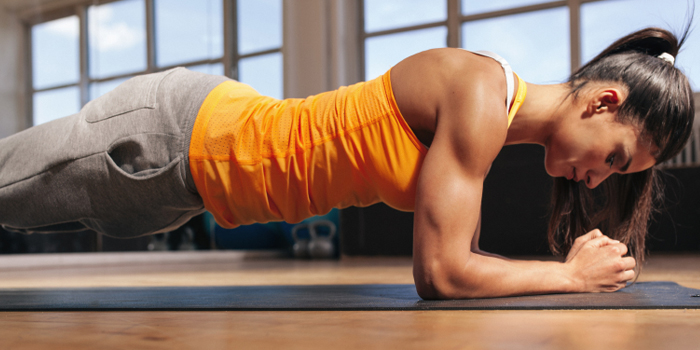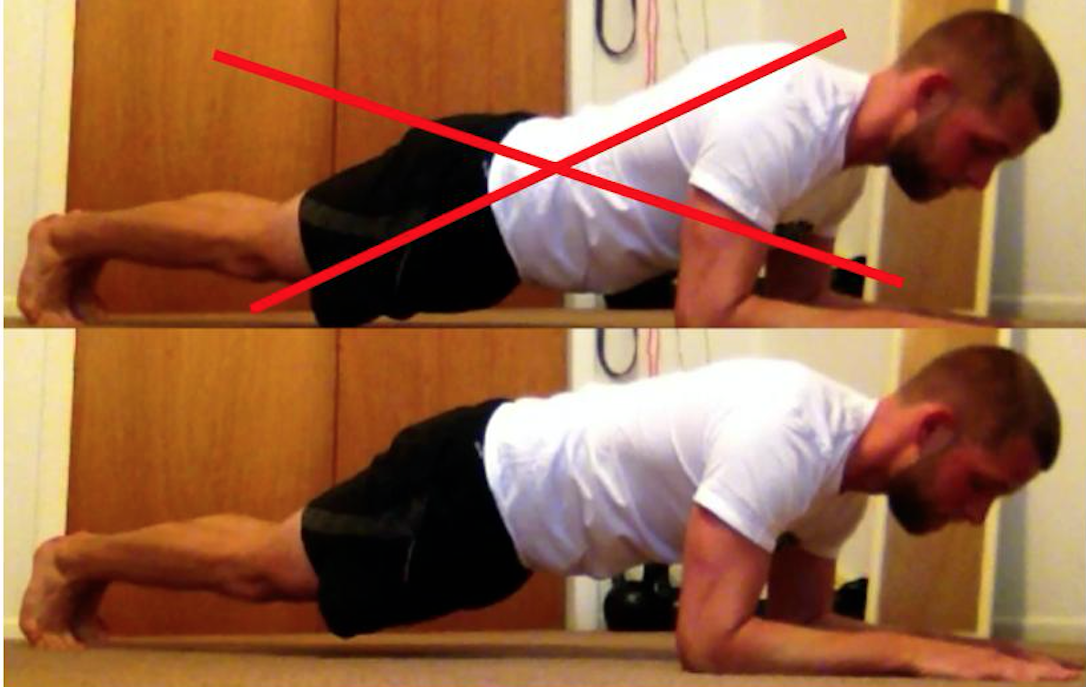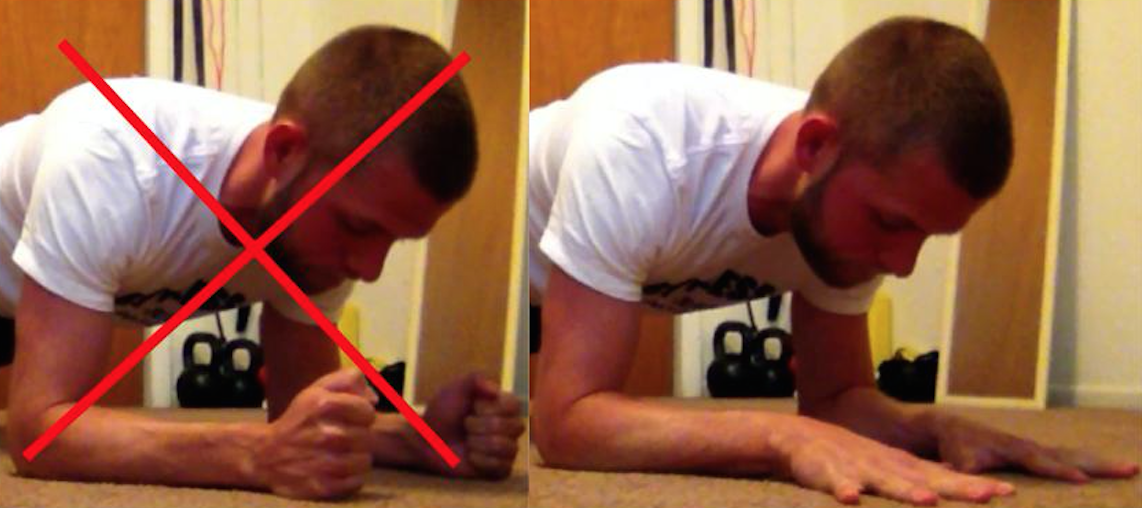
I’m not sure how prevalent it really is, but I’ve seen a lot of videos lately of plank-offs. Apparently people get together in large groups and try to out-plank each other; they hold the plank position for as long as possible. Duration seems to be the primary goal, even at the expense of technique and any real benefit of doing the exercise.
I guess the competitive and social aspects are cool. I’m all for encouraging a sense of community and for pushing others to kick ass. But there’s a big question that needs to be asked here: what are you getting out of this?
First, let me start by saying that the plank is an awesome exercise. It teaches body awareness. It builds total body stability. It encourages core stiffness. It serves as a foundation for all anti-extension (resisting lumbar spine extension) training. Overall, it’s just pretty damn cool. Unfortunately, people butcher it. Part of this butchering process is simply poor technique. But the other part—I mentioned it earlier—is an issue of methodological approach. More specifically, it’s an issue of passive vs. active movement.
Passive vs Active
Passive movement is what happens during a 10-minute plank. You’re just hanging out in the plank position, daydreaming about chocolate pies and unicorns, thinking la-de-da, this is so easy. Newsflash: the plank should not be easy. Ever. Period. If the plank is too easy, you’re doing something wrong.
RELATED: Three Burpee Technique Flaws and How to Fix Them
Just in case there’s any confusion as to what the plank entails, I’ll break it down. You hold your body parallel with the floor by supporting yourself on your forearms and toes. It’s essentially a full body isometric exercise that emphasizes integrated stability and postural control. In other words, you should be actively contracting as many muscles as possible to maintain the position, even though no dynamic movement occurs. Some of these muscles include:
- The rotator cuff complex and upper back musculature, both of which contribute to the upper body stability component.
- The glute complex and anterior core musculature, both of which contribute to stability at and around the hips and lumbar spine.
- The anterior musculature of the upper leg (the quadriceps and supporting muscles), which contributes to your ability to maintain knee extension.
And that’s not even the whole picture. I seriously wasn’t kidding when I said that the entire body has to actively contract to maintain the plank position. That’s exactly why passively holding a plank for 10-minutes—which is akin to dropping a medicine ball from above your head and calling it a slam—isn’t in your best interests.
Instead, you need to start thinking in terms of active movement. Do this by making sure that every muscle that should be contributing to a given exercise is actually contributing. Regarding the plank, the goal shifts from more time to more activation — and from there, more difficult exercise variations, and then more activation in those more difficult positions.
With that small rant out of the way, I’m going to leave you with two technique tips to help you transition from passive to active planking. You can easily apply both tweaks to your training within seconds. No learning curve is required. I’d also like to point out that this concept doesn’t apply solely to the plank. It’s always a good idea to think about what muscles should be firing in the movement you’re performing. If they’re not straining, you need to make them strain. If you don’t, you’re opening yourself up to potential imbalances that will develop over time.
Tip 1: Posteriorly Rotate Your Pelvis
People in the fitness industry talk a lot about anterior pelvic tilt (APT) and how it’s completely destroying the rest of your posture by promoting imbalance after imbalance, but there’s only the occasional mention of posterior pelvic tilt (PPT). While APT pulls your hips into flexion and extends your lumbar spine (which makes it tougher for the core musculature to make meaningful contributions), PPT does the opposite. It pushes your lumbar spine back to neutral, or into very slight flexion, and gives the anterior core and gluteal musculature a chance to contribute more oomph to the movement.
The best part? It’s really easy to do. When you’re in the plank position, just tuck your tail between your legs. If that cue doesn’t work for you, then give your lumbar spine a slight push towards the ceiling. Not too much — just enough to pull it out of extension. Now you’re in a much more advantageous position that allows for better recruitment of just about everything in the lumbo-pelvic-hip region.
Tip 2: Use Flat Hands
The first thought people seem to have when they drop into the low plank position is to make fists. This totally makes sense; it feels like a more natural position and doesn’t require any additional movement. But this is passive. We don’t want that. Instead of making fists, use flat hands. Spread your fingers apart, turn your hands in towards your body, and place your hands flat on the floor.
From here, there’s one more cue. When you start your set, push your hands into the floor. Like seriously push. Push like you’re trying to move the floor away from you (not the other way around). This simple cue causes major upper body stabilizers, like the rotator cuff complex, to fire all missiles, effectively increasing activation and the stability component that it contributes.
Take-Away Points
- Passive is loosey-goosey, failing to give it all you’ve got. Active is pushing every single contributing muscle to fire hard.
- Instead of increasing duration, increase muscle activation and progress to more difficult plank variations.
- Posteriorly rotate your pelvis to eliminate any lumbar extension, allowing for better contribution from the glutes and core musculature.
- Push your palms into the floor to increase activation of the upper body musculature.
Andy Chassé is a fitness professional and writer who has been working in the field since 2007. He holds a Master’s degree in Kinesiology, along with multiple certifications from NASM and ACSM. Andy is an ex-powerlifter turned runner who firmly believes that you don’t need a gym to get fit. Find out more at andychasse.com.












Distractions (having another person apply taps to force stabilization) are also useful for activation.
I'm totally with you on that approach, especially when you have a lot of time with someone. And in that case, by the time you get to the plank, you can actually use it to reinforce everything else. But when I'm crunched for time with someone, I've found the plank to be a nice two birds/one stone way to teach PPT, breathing, activation, etc.
Love using distractions, too!